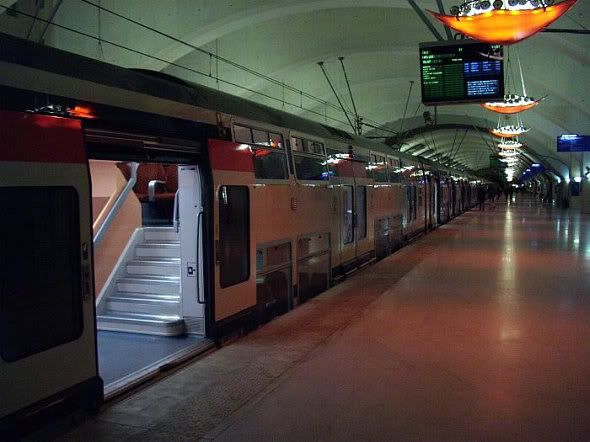Some Bart trips can be over an hour. MUNI is what is used for short subway trips, BART is commuter rail that is built like a subway.
As for other trains, I havent found any pictures, but Ive been on one in Switzerland. The problem with Switzerland is that there are dozens of car models. They have a system which doesnt understand the concept of a standard. Think of their system as cambridge, brookline, worcester, etc all purchasing their own cars. It's hard to find pictures of the one I was in.
Nobody likes standing for a long time. But people who get on at these far away stops will find seats because theyre the first. As the train fills up, the trip is shorter.
When I went to Paris and rode the RER, I had to take a 45 minute trip, and it was standing room only. At 6am. Reverse commute. Even in the developed world, it's not unheard of.
As for fare collection, standing room is hard now because the aisles are so narrow. By shifting the standees to larger empty spaces, movement actually becomes easier. Of course, in 50 years, when commuter rail gets as busy as the paris RER, we'll have to think of a different fare collection system (they use fare gates + inspectors to check that the ticket is valid for the right zones).

